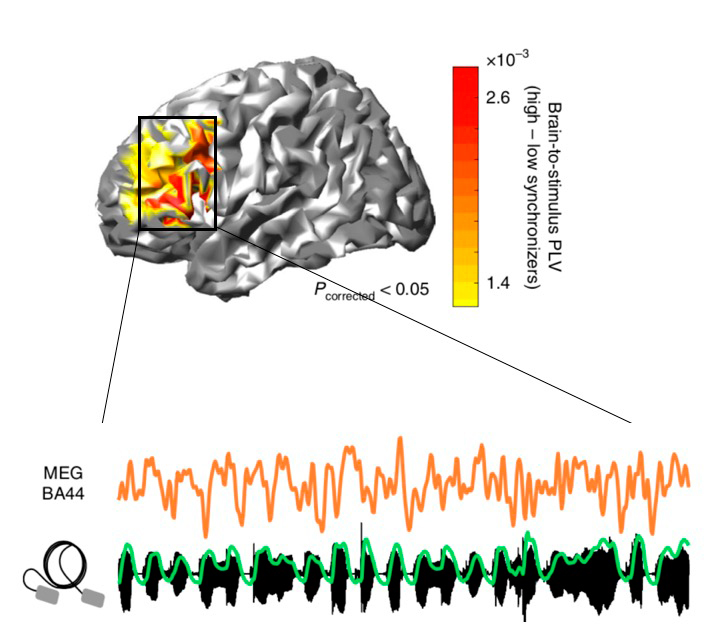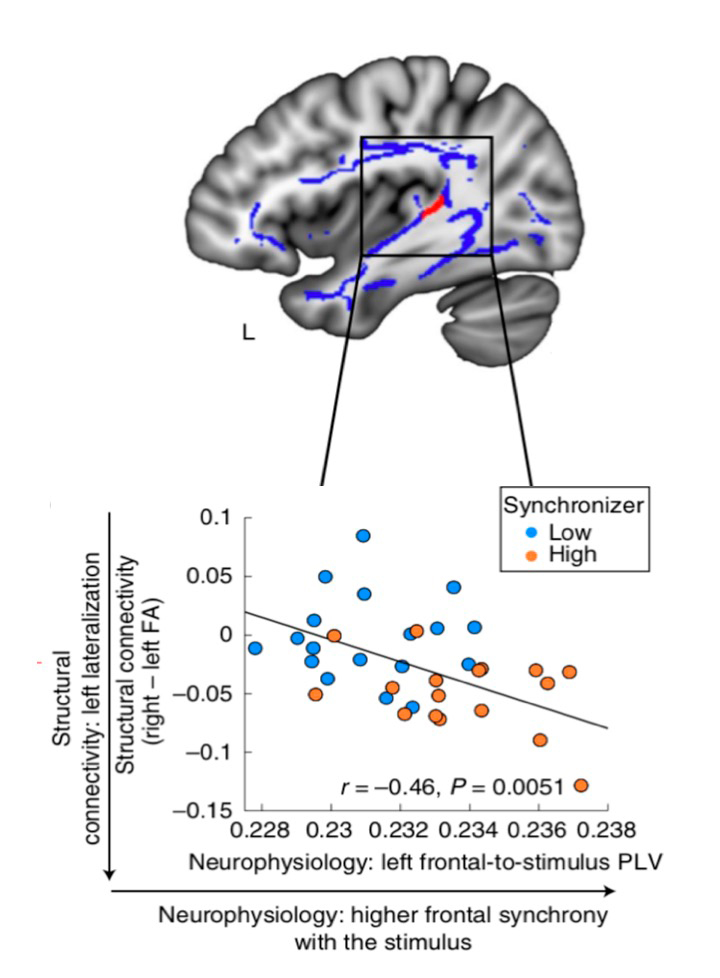Humans are good at synchronizing body movements with sound, for instance, when we move our feet or the head to the rhythm of a song. This happens without trying, without having trained and it has even been proved in babies. Most of the current research on this field has focused on how body movements are encouraged by the rhythm of the music, but there is little known about how this synchronization works when it comes to speech. Aiming to focus on the link between motor rhythms and speech audio signals, we designed an apparently easy task: for a minute, participants had to listen to a rhythmical sequence of syllables and at the same time, they had to repeatedly whisper “tah”.
The analysis and results showed an unexpected pattern: population is divided into two groups. While some people spontaneously synchronize whispers with that sequence (good synchronizers), others did not experience any effect from the external rhythm (bad synchronizers). This effect is surprisingly strong and stable over time. Given such different patterns, we studied whether these variations had implications in the brain organization and behaviour. Results showed that good synchronizers have more white matter in those pathways connecting speech-perception areas (listening) with speechproduction areas (speaking). In addition, the neural frequencies in brain areas related to speech motor planning of good synchronizers were more aligned with the syllable rhythm than poor synchronizers. Importantly, all these characteristics were accompanied by better word learning abilities in good synchronisers that were able to segment and recognise new words embedded in fluent speech. The task used in this study could serve to characterize individual differences and promote language research.
This methodology can help finding effects that were hidden by grouping populations with different neural and behaviour attributes. Also, we think the use of this test could reinforce the early diagnostic of some pathologies (such as Alzheimer’s, Parkinson’s or Multiple Sclerosis) and help assessing the speech and cognitive development in kids.
Reference

